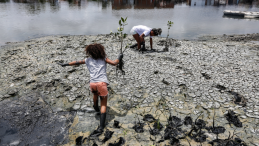A structured identification of the hurdles obstructing sustainable infrastructure can support the formulation of practical plans to overcome them, and thus facilitate the implementation of the International Good Practice Principles on Sustainable Infrastructure (hereafter: Principles). The identification of barriers to sustainable infrastructure is therefore proposed as a key activity for the Environmental Management Group (EMG) Consultative Process on Sustainable Infrastructure.
While there are many methods of conducting a barrier analysis (e.g., comparative case study analysis, Delphi study, qualitative expert interviews with structured content analysis, multi-criteria decision analysis (Analytical Hierarchical Process/AHP), and others), this research focuses on developing case studies of sustainable infrastructure to illustrate the key drivers and facilitators that actively work to overcome the identified barriers to the Principles in a real-world context taking into account a Resource Nexus perspective examining the interdependencies of environmental resources used in that context.
The initial case studies will analyse nation-wide barriers in Chile. The rationale for selecting Chile is based on the country’s diverse and transversal public infrastructure (adapted to 11 climatic regions), which allows for the extrapolation of results across wider regions, different sectors, and stakeholders, as well as cultural contexts, country-level contexts, etc. Furthermore, the country also rates highly in terms of regulatory quality, government effectiveness, and innovation climate.
Three sectoral deep-dives will be conducted for Mobility, Building and Construction, and Energy. As a cross-cutting resource barriers in regards to water will also be analysed. The selection of the sectors is based on their contribution to greenhouse gas (GHG) emissions, the dynamics, public infrastructure, the urban and rural split, and data availability and access.




